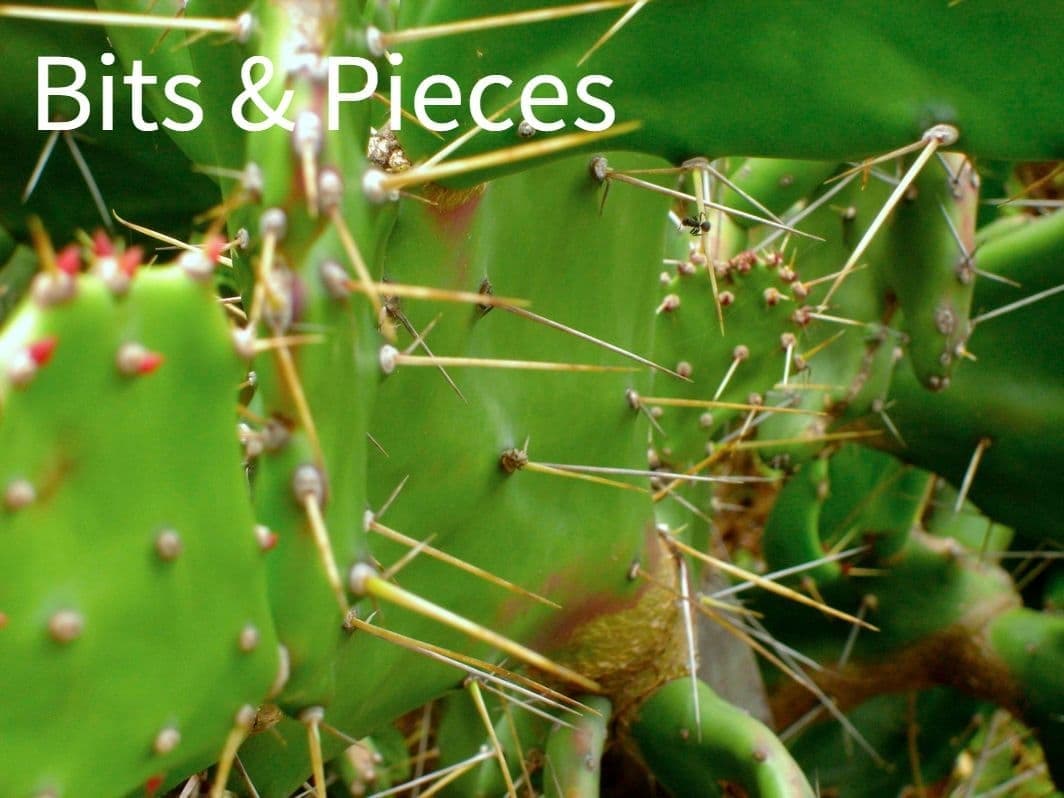
Filipino Food
From a foreign traveller's point of view, Filipino food (Lutong Pinoy, as it is fondly called by locals), is probably the most least known and oftentimes overlooked of all the asian cuisines. But with the proliferation of social media and the Internet, the filipino cuisine has finally got its fair share of attention (and probably some converts). Like the filipino culture, filipino cuisine is a melting pot of dishes from many countries. It has culinary influences from the spanish, american, Japanese and some of its asian neighbors, and the style of cooking has evolved over the years into what it is today. Majority of mainstream Filipino dishes come from the cuisines of the Ilocano, Pangasinan, Kapampangan, Tagalog, Bicolano, Visayan (Cebuano, Hiligaynon and Waray), Chavacano and Maranao ethno-linguistic groups. Spices and ingredients vary between regions and one region will have a different twist on a common dish.
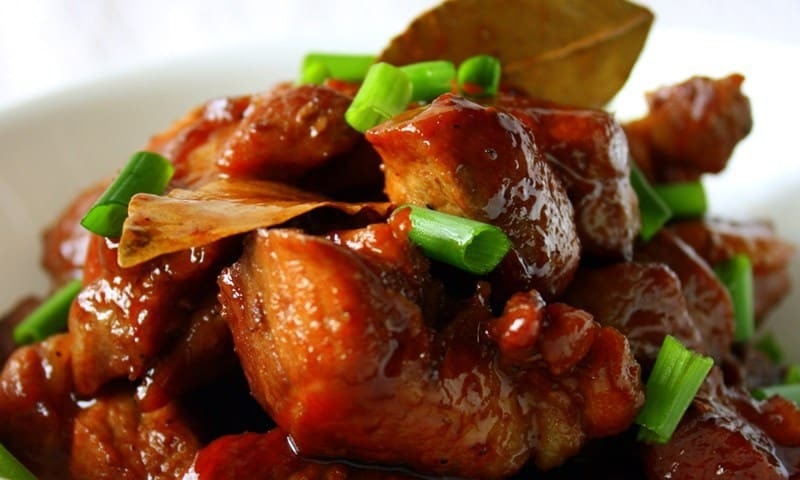
Chicken-Pork Adobo
Adobo, for example, is a regular family fare in every filipino table. This is a very simple dish of garlic, onions, vinegar, soy-sauce, peppercorns and bay leaves. However, different regions will have a different take on this dish. Adobo from Cebu is a bit different from what they serve in Manila. Filipinos in the Bicol region like to put chili peppers on a lot of their dishes. Kapangpangan cuisine has its spanish roots, with dishes like caldereta, asado, mechado, estofado, menudo, embotido, afritada, lengua to name a few. "Sisig" (a mash-up of different meats or fish and veggies on a sizzling platter) as it is known today is a kapangpangan delicacy.
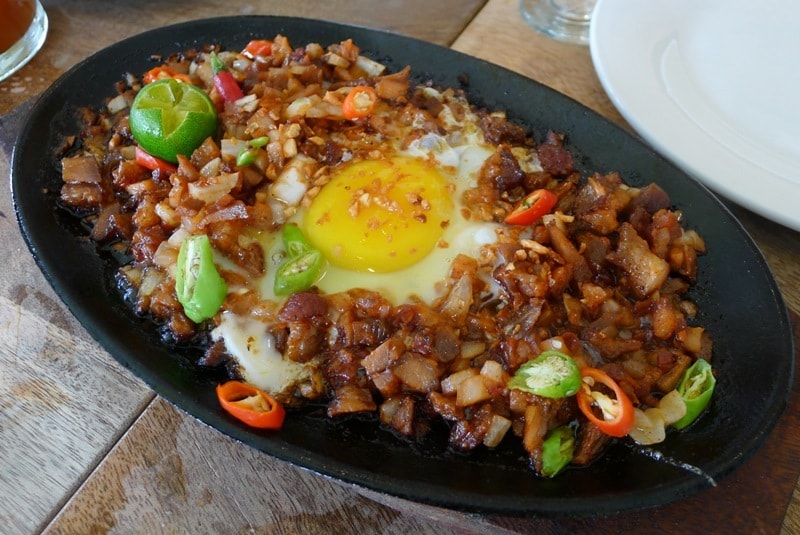
Sisig
Another interesting thing about Filipinos is the way they eat their food. In the old days, eating with the hands was a common practice in many Filipino families (hence the term "kamayan" or "with the hands" to translate it loosely). There's even a Kamayan restaurant in different areas in Manila where guests eat traditional Filipino food with their hands. During fiestas in many of the country's villages and towns, every home becomes an open house for everyone celebrating the fiesta (celebrated to commemorate the patron saint of each town). Nowadays, they have this buffet-like thing called "Boodle Fight", with various meats, seafoods, and lots of rice (Filipinos love their rice) spread out on a large table over banana leaves for everyone to feast on (kamayan-style, of course).
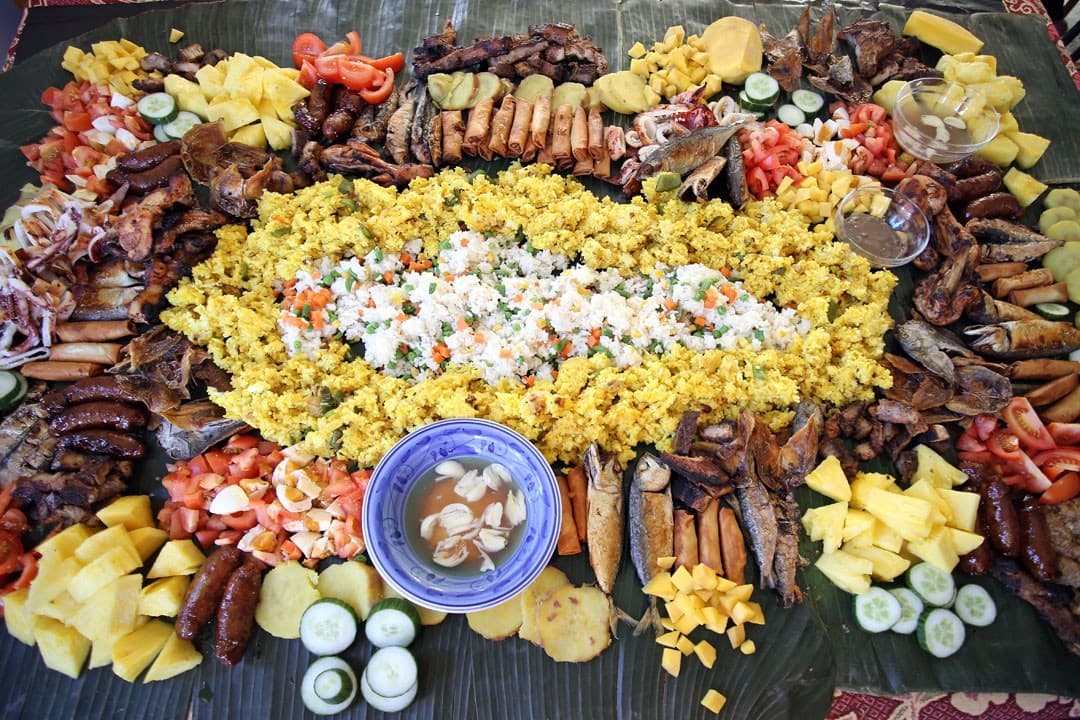
A typical boodle spread (no spoons/fork, please)
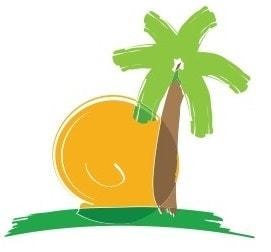
It's more fun in the Philippines
That is the motto of the Philippine Department of Tourism. But, does it really live up to the hype? Are the islands really that stunning? As they say, "beauty is in the eyes of the beholder". Everyone is entitled to his or her own opinion. You'll have to go there to find out. But just for a bit, imagine yourself sipping an ice cold glass of margarita under a cabana on one of its idyllic tropical beaches enjoying the beautiful sunset, surrounded by palm trees and friendly english-speaking people (not everyone though, but you'll get by just fine). With more than 7,000 tropical islands to choose from, there's an island to suit every taste, from marooned slicks of sand in the middle of the ocean, to volcanic fantasy-scapes concealing hidden lagoons, to sprawling mega-islands such as Luzon and Mindanao. It'll be a worthy additon to your bucket list. Time to put on those flipflops and get some sunscreen !
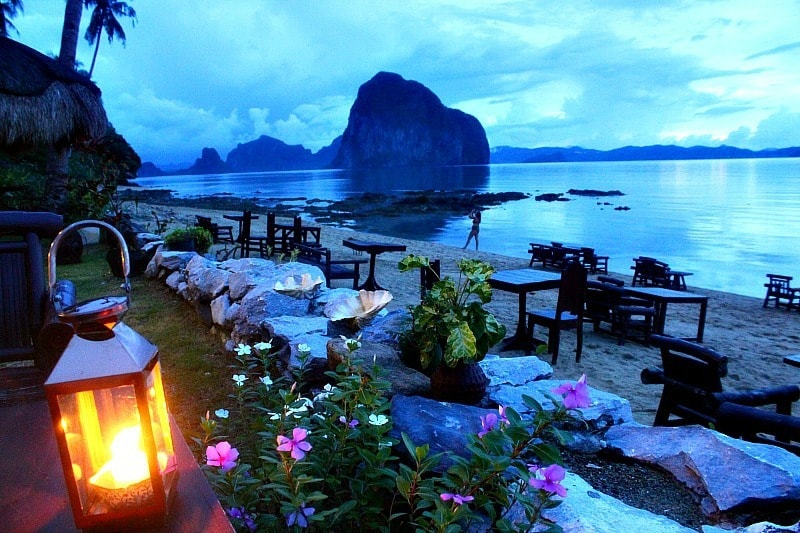
Sunset in El Nido
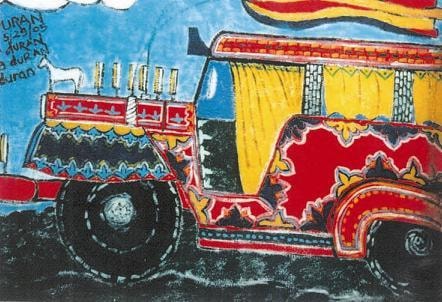
King of the Road
You'll find them everywhere in the Philippines. The Jeepney is a mobile assemblage of signs, and symbols, decorative motifs and fetishes, rattling along the streets of Metro Manila and other towns throughout the archipelago. They've been here for a while and they're still the cheapest way to go anywhere and everywhere while you're in the islands (if you don't mind the heat and billowing fumes from its diesel engines). While not as comfy as your uber ride, they're workhorses that have loyally served its Filipino master for decades now. When the US began reducing their military presence in the Philippines at the end of World War 2, they surplused a lot of Willys jeeps. Enterprising Filipinos began extending the length of these vehicles and turning them into local people haulers.
Unfortunately, ingenius and practical as they are, this Filipino icon is slowly being replaced by more "environmentally-friendly" substitutes like hybrid mini-buses and e-jeepneys which run on solar energy.
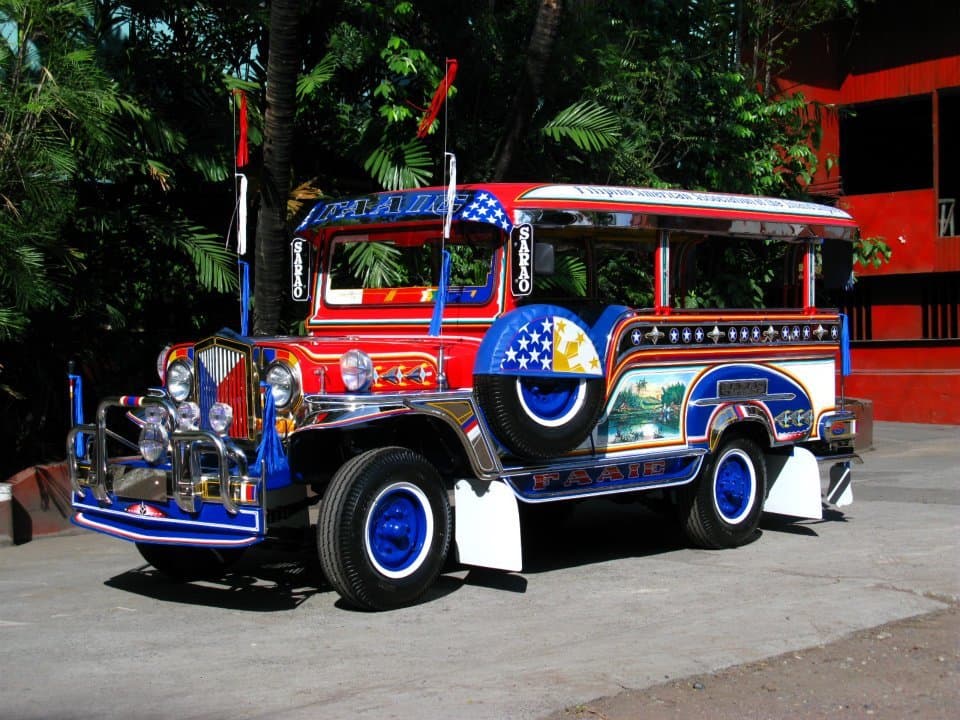
The ubiquitous Jeepney

Wish Come True
Filipinos love karaoke. You'll hear music everywhere you go, from live bands in dingy bars in Manila to full blown concerts in many of the city's huge malls. Back in the day, I used to wake up to the sound of roosters. Now they're replaced by our neighbor's karaoke machine blasting away early in the morning. Like the iconic Jeepney, someone came up with the idea of a "radio station on wheels". How do you reach out (musically) to a vast audience in a country with over 7,000 islands. The answer came in the form of a bus, converted into a mini-radio station complete with state of the art music recording and sound system large enough to accomodate a small band. The Wish Bus is an actual radio music station on wheels that parks in strategic areas in the city or even remote regions of the country in search of musical talents. They also feature well known local musicians as well as foreign artists who are in town to promote their music. Since they use YouTube to publish their live performances, you'll see a lot of YouTubers reacting to random videos (Wish auditions tons of them regularly) to rack up views for their sites. You'll see a lot of mind blowing performances, and mediocre ones :) But that's entertainment. The video / sound quality is pretty good and makes for great binge watching when you're bored.

Radio Station on Wheels

Boxing
Next to basketball (which is kind of like the unofficial national sport), boxing is a huge thing in the Philippines. Apparently, when Manny Pacquiao (who doesn't know his name by now?) has a big fight anywhere in the world, the whole country grinds to a stop. People from all walks of life gather around their TV screens or cough up a month's worth of salary for pay-per-views to watch their idol slug it out with the best pound for pound boxers out there. When he wins, the whole country goes into a frenzy of celebrations (it's like 4th of July). He's already in his 40's (as of this writing) and obviously well over his prime as a boxer, but amazingly still manages to surprise with his speed and power. Aside from boxing, he's also a businessman, singer / actor (yikes!), basketball team owner and politician all rolled into one. On top of that, he's also a philanthropist and likes to share his good fortune with some of his less fortunate countrymen.
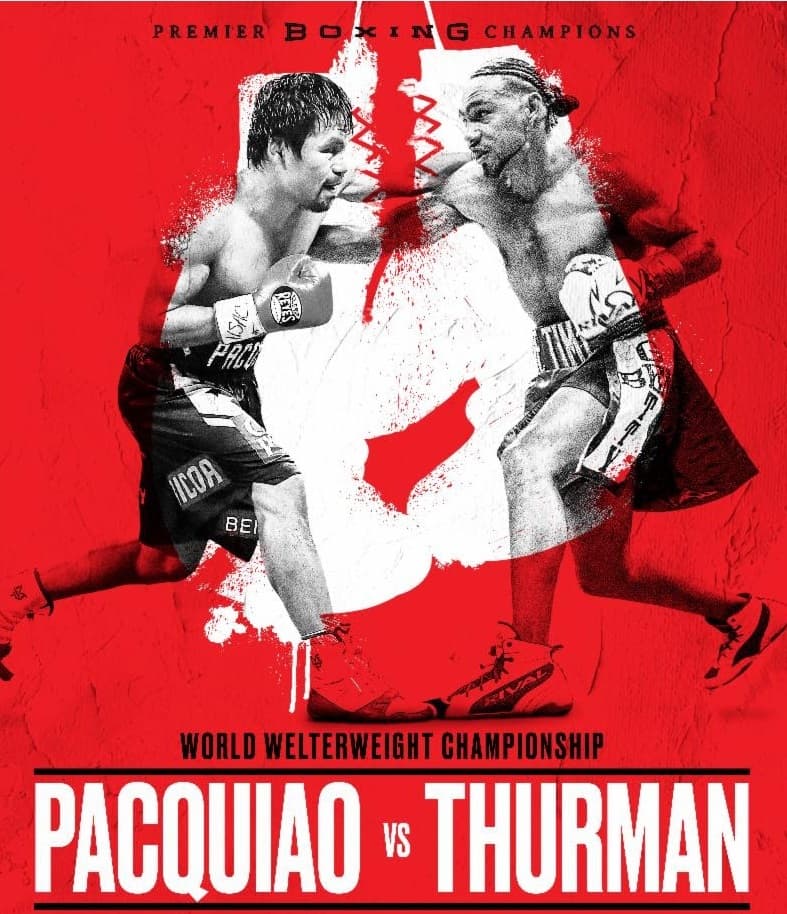
All-time Greats
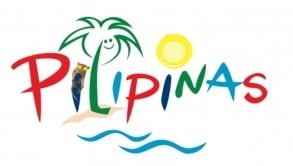
Interesting Facts
Christmas is the longest holiday in the Philippines
Christmas season in the Philippines comes as early as September (the "ber" months, as they call it), and ends in the third or fourth week of January (that's almost half of the year!) culminating in the feast of Santo Niño (Christ Child) and the Black Nazarene. You'll hear christmas songs playing at the malls and shopping bazaars begin to sprout throughout the city. Filipinos love celebrating Christmas so much that they start putting up christmas decors and lanterns (called "parol") as early as September. Don't be surprised to hear people caroling in front of your house. It could be a couple of kids or sometimes a band complete with musical instruments. Being a mostly catholic population, Filipinos will take part in religious activities throughout the Christmas season. These include the Night Mass, known locally as simbang gabi, which is when Filipinos attend mass services 9 days in a row leading up to Christmas Eve, all held at the crack of dawn. Christmas is probably one of the most revered and highly anticipated event in the islands.
McDonalds is not that big in the Philippines
Jollibee is the McDonalds version of the Philippines. You'll see this fastfood joint with its bright red bee mascot everywhere you go in the cities, even in small towns. Although the menu is much more tailored to Filipinos (they have lots of rice meal sets), there are burgers, spaghetti (too sweet), hotdogs and other american fares. The Jollibee fried chicken is a must try on the menu (a bit spicy).
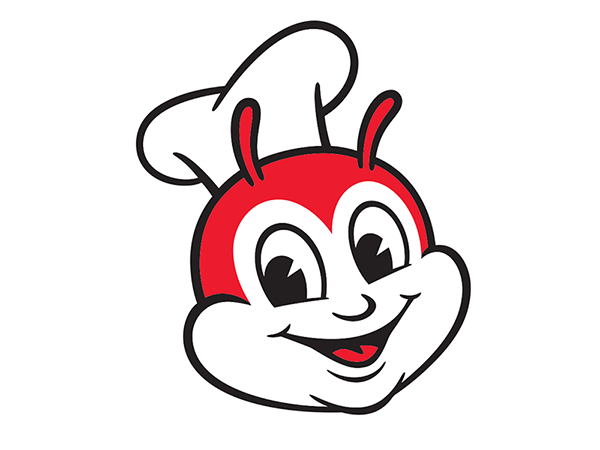
The Philippine Flag signifies a different meaning when turned upside down
The Philippine flag has 3 colors (red, white and blue) with a triangle in the center, couching a golden-yellow sun with eight primary rays, each representing a Philippine province and 3 stars representing the country's 3 largest islands (Luzon, Visayas and Mindanao). A unique feature of this flag is its usage to indicate a state of war if it is displayed with the red side on top, which is effectively achieved by flipping the flag upside-down.
![]() Blue on top is the normal peacetime status
Blue on top is the normal peacetime status
![]() Red on top means the country is at war (not a good time to visit)
Red on top means the country is at war (not a good time to visit)
Three of the world's top 10 biggest malls are found in the Philippines
The Filipinos are crazy about their malls. In fact, they have some of the biggest malls in the world (SM Megamall, SM North Edsa, and SM Mall of Asia). Not surprising, since the country is hot and humid most of the year and airconditioned malls provide a soothing escape from the intense heat. On the bright side, with more than 7,000 tropical islands, there's always a beach nearby (time to pop those ice-cold San Miguel Beer).
Filipinos love to text
According to a 2009 statistics, the Philippines had around 72 million mobile-service subscriptions (roughly 80% of the Filipino population), with around 1.39 billion SMS messages being sent daily. Consequently, the Philippines became known as the "text capital of the world" during the late 1990s until the early 2000s. The highly social nature of Philippine culture and the affordability of SMS compared to voice calls also led to the upshot of SMS usage in the country and quickly became a popular tool for Filipinos to keep in touch with friends and loved ones as well as to express their opinions on current events and political issues. After spending some time with Filipinos, you'll probably be surprised when your social media following explodes (Filipinos are very passionate about SNS).
